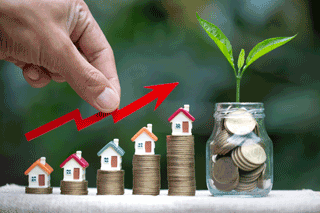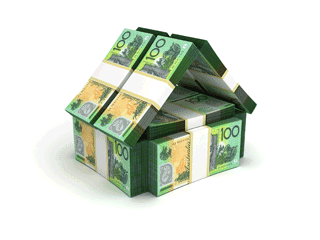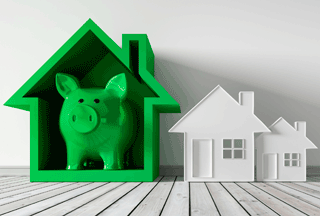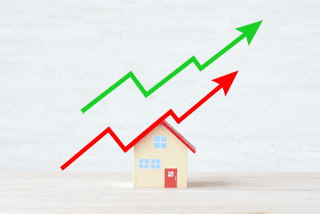Quote Of The Week
“The rise in regional markets started some years ago, but the flexible work arrangements predicated by Covid, and people reassessing their lifestyle due to the pandemic, have accelerated the shift of people out of capital cities.”
PropTrack director of economic research Cameron Kusher
Vendors Make $27bil In Profits
 The number of properties selling for a higher price than the owners originally paid has increased, with new figures revealing 92.4% of sellers are turning a profit.
The number of properties selling for a higher price than the owners originally paid has increased, with new figures revealing 92.4% of sellers are turning a profit.
The latest CoreLogic Pain and Gain report reveals profit-making sales, at the end of 2021, increased 50 basis points on the June Quarter. The result was the highest level of profitability recorded in more than a decade, with total resale profits hitting $27.3 billion.
The report coincides with the latest housing finance data from the ABS which shows the value of investor lending reached record levels at the end of last year.
CoreLogic head of research Eliza Owen says the figures show that property investors throughout Australia are looking at a median profit of $270,000 when they sell.
According to Maree Kilroy of BIS Oxford Economics, property prices are on the increase as investors can’t see similar opportunities in other areas such as cash and bonds.
300+ Suburbs Hit $1mil Median
 An additional 311 Australian suburbs now have median house prices of $1 million or more, with Sydney and regional NSW accounting for the largest number of new entrants.
An additional 311 Australian suburbs now have median house prices of $1 million or more, with Sydney and regional NSW accounting for the largest number of new entrants.
CoreLogic data shows that between May and December 2021, 38% more suburbs recorded a median price of $1 million or more.
In all, 77 suburbs in the Sydney region joined the list, with the majority of the new entrants on the Central Coast. There are now 417 Sydney suburbs with million-dollar-plus medians.
Brisbane recorded 40 new entrants, taking its total to 91, while Regional Queensland added 36 suburbs to reach a total of 82. Brisbane suburbs included Sandgate, Shorncliffe, Nundah, Kedron, Sunnybank, Annerley and Enoggera.
An additional 37 suburbs were added to Melbourne lifting its total to 221, while Adelaide added 25 suburbs to 70 and the ACT recorded 18 new additions to reach a total of 45.
Perth added 10 new suburbs to bring its total to 52 and Hobart added two new entrants to hit seven.
Banks Offer Faster Loan Approvals
 Home lenders continue to fight for dominance, with faster approvals their latest tool to entice borrowers.
Home lenders continue to fight for dominance, with faster approvals their latest tool to entice borrowers.
Big banks such as ANZ have revealed they want to reduce waiting times for approvals so that they can keep up with demand.
Along with quick approvals lenders are continuing to offer cashback deals with 25 banks and lenders offering mortgage customers incentives to shift their home loan over, according to analysis by RateCity.
They are offering the sweeteners at the same time as a number of banks have started to lift fixed interest rates. ANZ has lifted rates on fixed-rate mortgage three times in the past three months.
According to Lendi Group chief executive David Hyman, the median variable interest rate secured by customers for loans settled on its platform in the past two months was 2.31%. He says approval times have fluctuated significantly in the past two years and that’s something banks have to improve.
“Many lenders have been working hard to improve their service level agreements because the customer experience is just as important as price,” Hyman says.
Average Borrower Is 45mths Ahead
 Australians have paid an additional $50 billion in mortgage payments during the Covid pandemic, with some more than three years ahead of their repayments.
Australians have paid an additional $50 billion in mortgage payments during the Covid pandemic, with some more than three years ahead of their repayments.
Low interest rates and reduced spending because of the closed international borders and lockdowns, means many Australians have parked their extra cash in their home loans.
APRA data shows that by the end of 2021 the average homeowner was 45 months in advance. That’s a big step up from the start of 2020 when homeowners were 32 months ahead.
Market Economics managing director Stephen Koukoulas says the pandemic changed spending habits.
“The pandemic changed a lot of things, we did tend to stay at home, didn’t get to spend our money on luxurious things like holidays,” Koukoulas says. “A lot of people decided to take advantage to pay down their mortgage.”
He says many have reduced the time to pay off their mortgages by six or seven years and have a good buffer when interest rates do rise.
Pandemic Changes House Price Trends
 Regional property markets continue to lead, with new figures revealing nine of the top ten areas for price growth in the past year are in regional centres.
Regional property markets continue to lead, with new figures revealing nine of the top ten areas for price growth in the past year are in regional centres.
PropTrack’s 10-year growth tracker reveals the ongoing shift to regional towns has pushed up prices in many of Australia’s country and coastal suburbs. The only metro area to make the top 10 list was Sydney, which came in 10th for property price growth.
PropTrack director of economic research Cameron Kusher says the increase in regional property prices started some years ago.
“But the flexible work arrangements predicated by Covid, and people reassessing their lifestyle due to the pandemic, have accelerated the shift of people out of capital cities,” he says.
“It isn’t just a shift permanently out of the capital city, but people also seeking second homes and investment properties in these lifestyle markets that have all contributed to the rapid increases in prices.”
PropTrack’s data shows nationally prices have increased 89% in the past decade on average.




